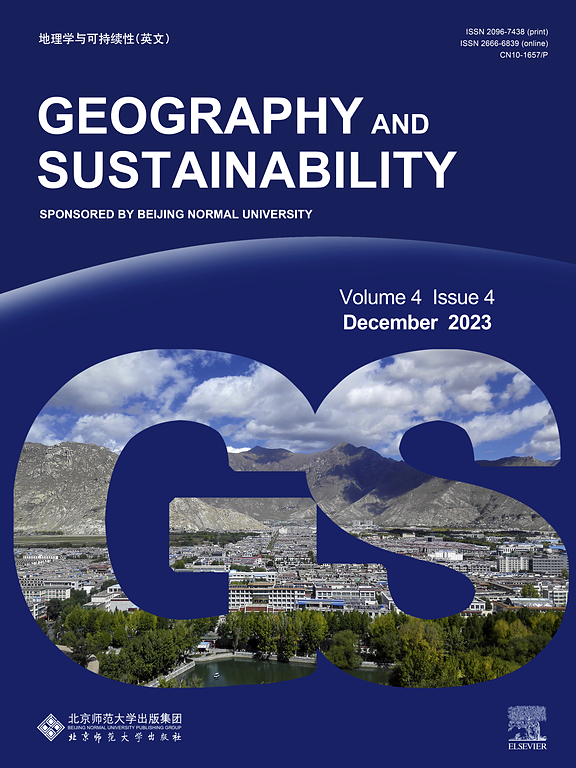Geospatial monitoring and analysis of agricultural drought to identify hotspots and risk assessment for Senegal
IF 8
1区 环境科学与生态学
Q1 GEOGRAPHY, PHYSICAL
引用次数: 0
Abstract
Agricultural drought, characterized by insufficient soil moisture crucial for crop growth, poses significant challenges to food security and economic sustainability, particularly in water-scarce regions like Senegal. This study addresses this issue by developing a comprehensive geospatial monitoring system for agricultural drought using the Regional Hydrologic Extremes Assessment System (RHEAS). This system, with a high-resolution of 0.05°, effectively simulates daily soil moisture and generates the Soil Moisture Deficit Index (SMDI)-based agricultural drought monitoring. The SMDI derived from the RHEAS has effectively captured historical droughts in Senegal over the recent 30 years period from 1993 to 2022. The SMDI, also provides a comprehensive understanding of regional variations in drought severity (S), duration (D), and frequency (F), through S-D-F analysis to identify key drought hotspots across Senegal. Findings reveal a distinct north-south gradient in drought conditions, with the northern and central Senegal experiencing more frequent and severe droughts. The study highlights that Senegal experiences frequent short-duration droughts with high severity, resulting in extensive spatial impact. Additionally, increasing trends in drought severity and duration suggest evolving climate change effects. These findings emphasize the urgent need for sustainable interventions to mitigate drought impacts on agricultural productivity. Specifically, the study identifies recurrent and intense drought hotspots affecting yields of staple crops like maize and rice, as well as cash crops like peanuts. The developed high-resolution drought monitoring system for Senegal not only identifies hotspots but also enables prioritizing sustainable approaches and adaptive strategies, ultimately sustaining agricultural productivity and resilience in Senegal’s drought-prone regions.

求助全文
约1分钟内获得全文
求助全文
来源期刊

Geography and Sustainability
Social Sciences-Geography, Planning and Development
CiteScore
16.70
自引率
3.10%
发文量
32
审稿时长
41 days
期刊介绍:
Geography and Sustainability serves as a central hub for interdisciplinary research and education aimed at promoting sustainable development from an integrated geography perspective. By bridging natural and human sciences, the journal fosters broader analysis and innovative thinking on global and regional sustainability issues.
Geography and Sustainability welcomes original, high-quality research articles, review articles, short communications, technical comments, perspective articles and editorials on the following themes:
Geographical Processes: Interactions with and between water, soil, atmosphere and the biosphere and their spatio-temporal variations;
Human-Environmental Systems: Interactions between humans and the environment, resilience of socio-ecological systems and vulnerability;
Ecosystem Services and Human Wellbeing: Ecosystem structure, processes, services and their linkages with human wellbeing;
Sustainable Development: Theory, practice and critical challenges in sustainable development.
 求助内容:
求助内容: 应助结果提醒方式:
应助结果提醒方式:


